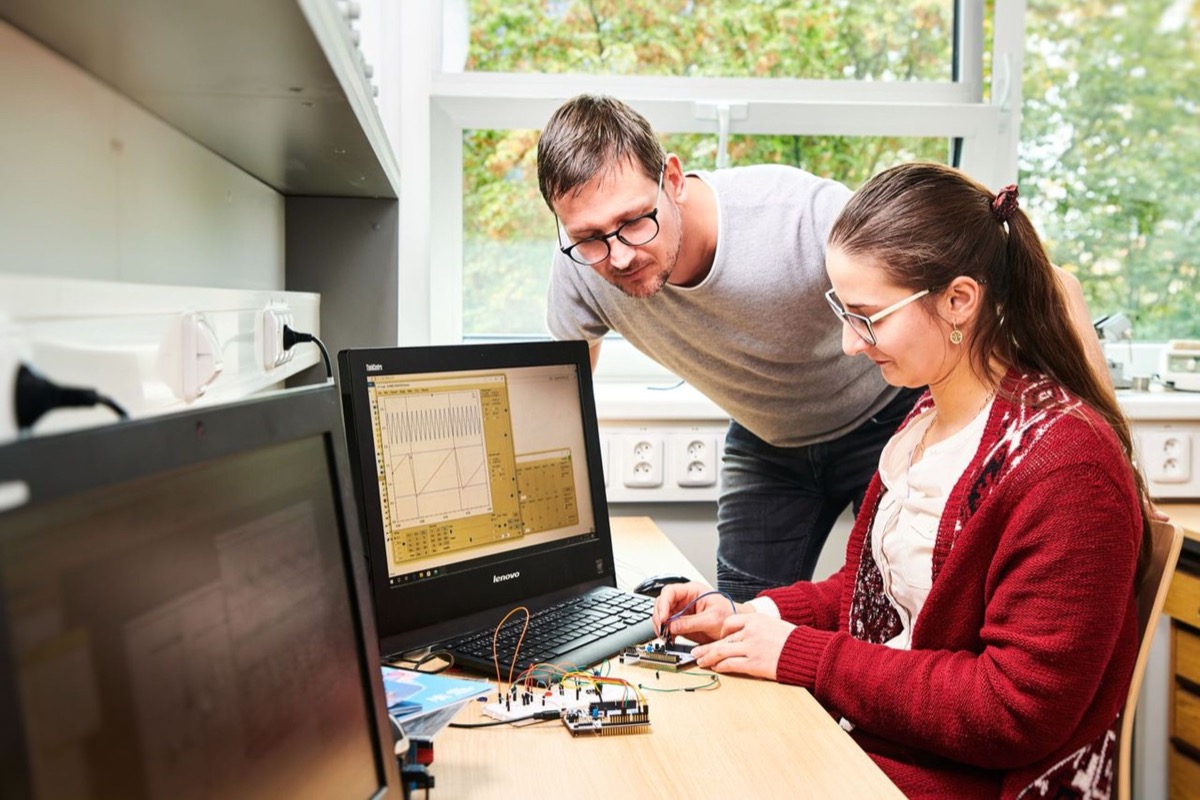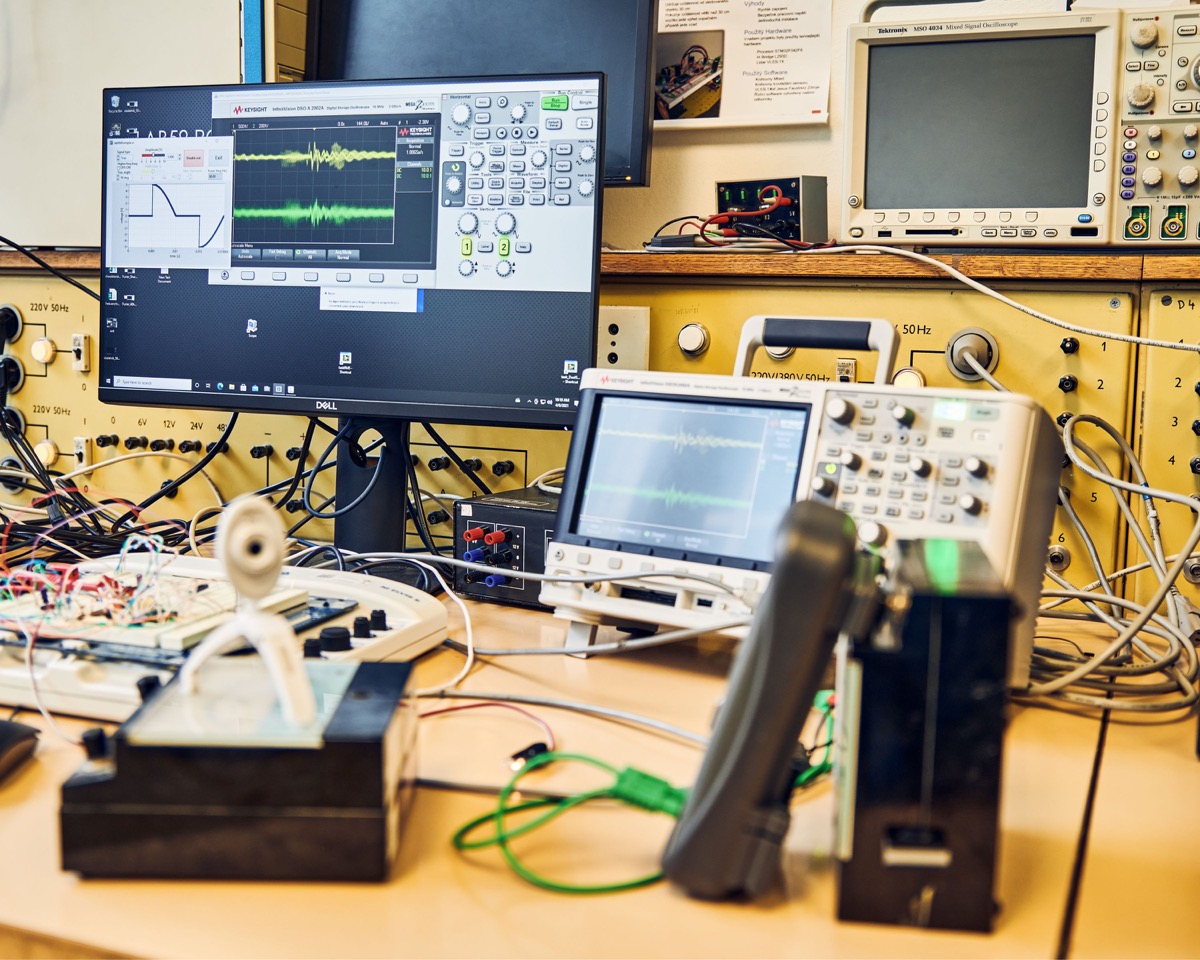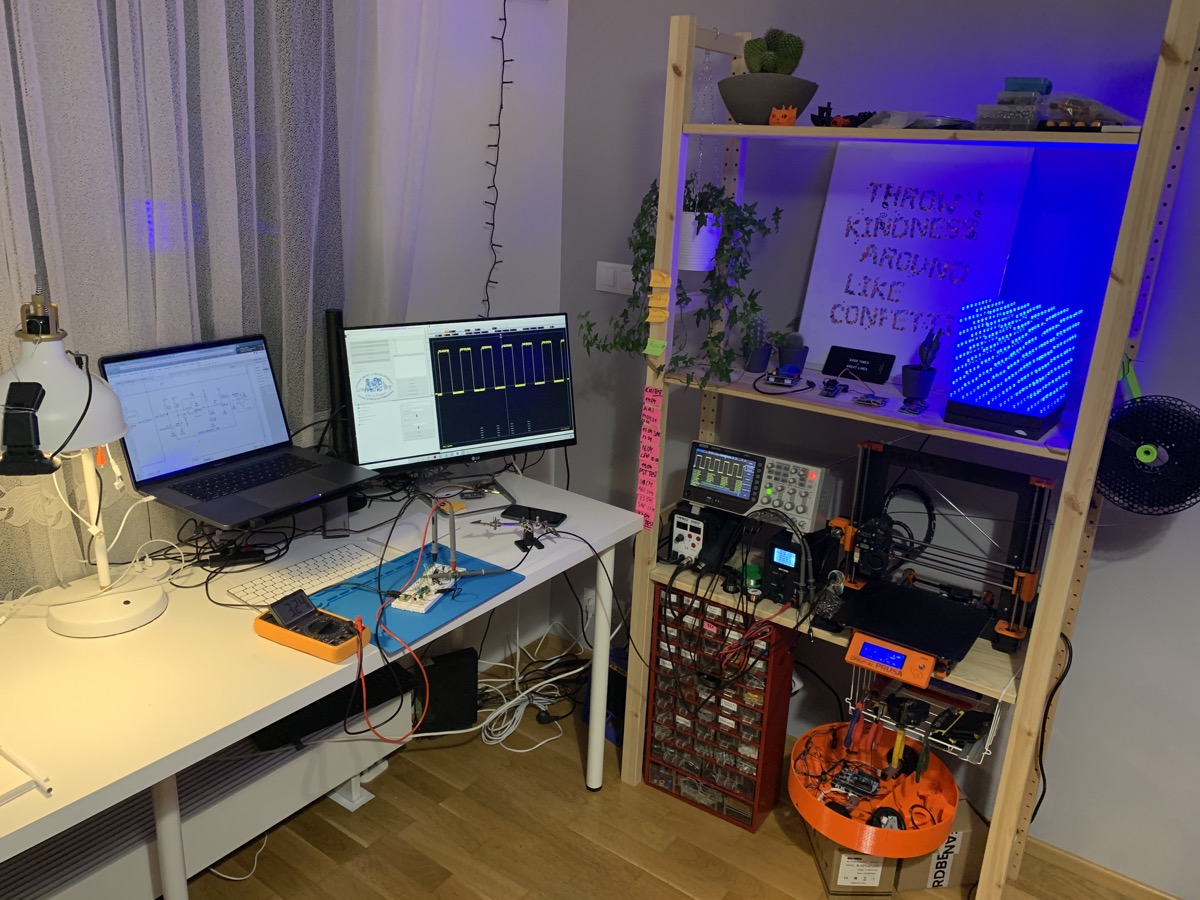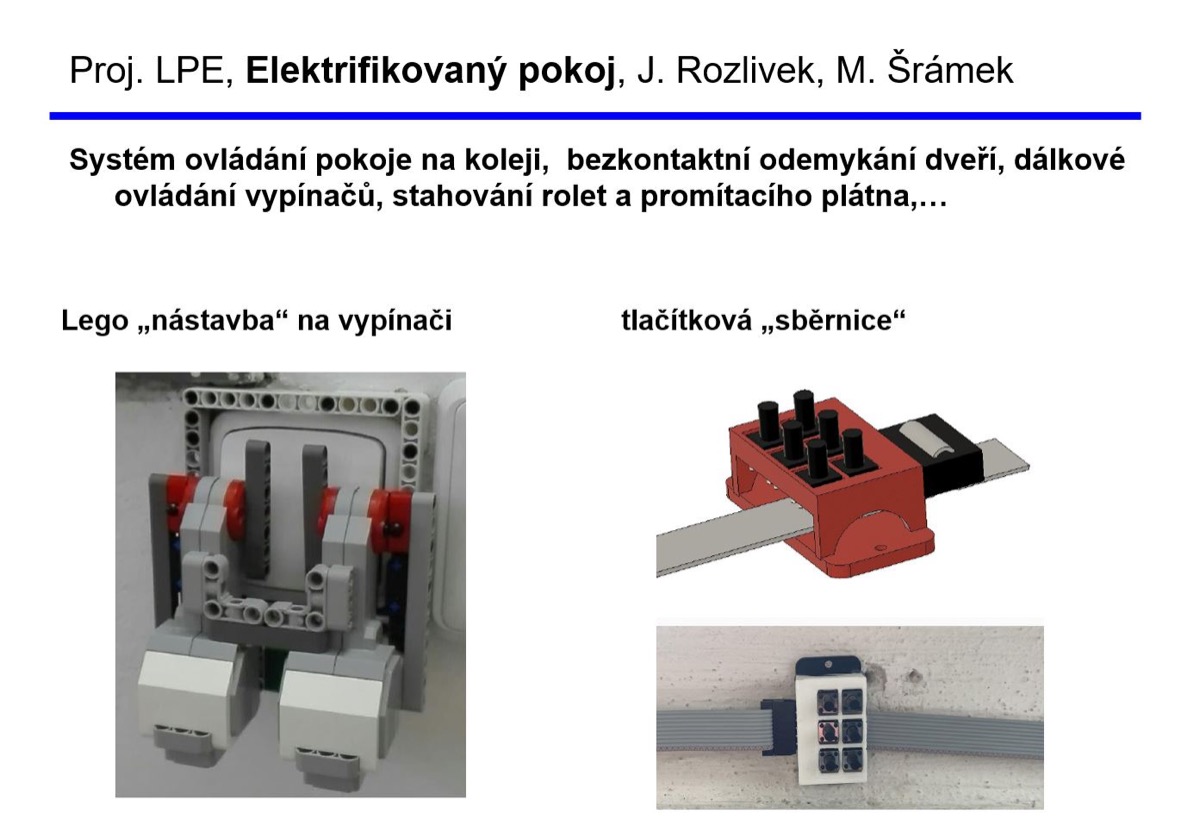Students Fight Bravely With Distance Learning. They Put Together Some Remarkable Projects at Home
For more than a year, electrical engineering students have not had access to teaching laboratories due to the pandemic situation. But if they are to become quality developers, practical training is a must. Teachers from the Department of Measurement of the Faculty of Electrical Engineering (FEE) therefore use home laboratory teaching or a remote teaching laboratory in their subjects. Despite more complex conditions, interesting projects are being created even within distance practical teaching. Students are preparing, for example, a muscular activity sensor, an autonomous module for growing flowers or monitoring a chicken coop.
Kateřina Poláková, a student of the Cybernetics and Robotics program, describes the difference between classical and distance practical teaching: “It leads us to prepare more for tasks. At school, you can look at a lot of things or it is possible to consult with classmates. But at home there is no one to help us, so we need to go through the tasks ahead and prepare for what awaits us at the exercise. Distance learning itself does not suit me, I study better in a different environment than at home. I need real perceptions, just looking at a computer is not enough for me – until I don't touch the thing it is as if it didn't exist. I therefore find it great that our instructors try their best to provide practical training, even though it is often beyond standard teaching. I enjoy homework, where I can do all the involvement myself. It's a great way for me to finally try out everything we learn theoretically in practice.”
Despite Covid: an electrified room, a magnetic pen or a robotic arm.
Students can build their own home laboratory at home using parts from teachers. Simple connection with a microcontroller (F0-Lab or LEO module – Little Embedded Oscilloscope) can temporarily replace many expensive laboratory instruments. Using this home laboratory, students will get acquainted with the basic blocks of an industrial sensor system in an interactive form - from the sensor itself through signal processing circuits, analog signal to digital conversion, its software processing using a microprocessor to send results to the parent system and their presentation to the user. within the concept of the “Internet of Things”.
Subjects using home laboratories conclude with final projects. “I wasn't sure whether to keep separate semester projects in distance learning, I was more pessimistic in this regard, but the result is very positive. An interesting project, for example, is two students who live in a dormitory and have decided to electrify their room. With the help of lego kits and electronic components, they made contactless door unlocking, remote control of switches or pulling down blinds and a projection screen,”” doc. Jan Fischer from the Department of Measurement FEE describes the experience with distance practical training.
Student Adam Herold also came up with an exceptional project: “Solving a problem can take many times more time at home than at school, on the other hand, one learns and overcoming obstacles alone can help to better understand the issue. I enjoyed tinkering at home and I am glad that the subject took place in spite of the situation. I really enjoyed the work on the final project, even though it was more difficult at home.” His final project for the Laboratory of Industrial Electronics and Sensors uses magnetic field sensors (the Hall sensors) to sense the position of a magnetic pen. The position of the pen is then shown on the display. He also created a program for this platform – a simple game inspired by the Snake game known, for example, from Nokia phones. In this version of the game, the snake is controlled by the movement of a magnetic pen over the sensing surface. Adam Herold presented the project in its raw form at the end of last semester, but he continued to work on it over the summer, and at the beginning of September his play was tested at the Open House Prague 2020 festival at the Department of Measurement.
Student Ekaterina Jaroslavceva develops her practical skills even in her free time. She built a robotic arm capable of moving in space, controlled via wifi. The selection of the final project is yet to come: “The topics are really diverse. Classmates are going to create, for example, a muscular activity sensor, an autonomous module for growing flowers or chicken coop monitoring. Personally, I perceive this type of teaching as the best possible replacement for practical teaching under these conditions. I don't think that distance practical teaching will replace contact teaching in the future, but certainly a home laboratory or a remote laboratory can be an interesting addition to classical laboratory work.”
The experiment in the laboratory can also be performed remotely
The reverse solution of home laboratories is the method of remote laboratories. In the laboratory at the faculty, a measuring task with real devices controlled via a computer is compiled. Students connect to the laboratory computer using remote desktop technology and control the devices through realistic virtual panels. At the same time, they can see a real experiment in the laboratory via a webcam.
“Thanks to this, we can learn to control such a complicated device as a digital oscilloscope with many advanced functions very effectively, even remotely. But I'm still looking forward to testing the measurements in the laboratory in person soon. I need to make mistakes, which I learn the most and which are difficult to simulate in the home environment,” adds Kateřina Poláková to her opinion on distance practical teaching.



